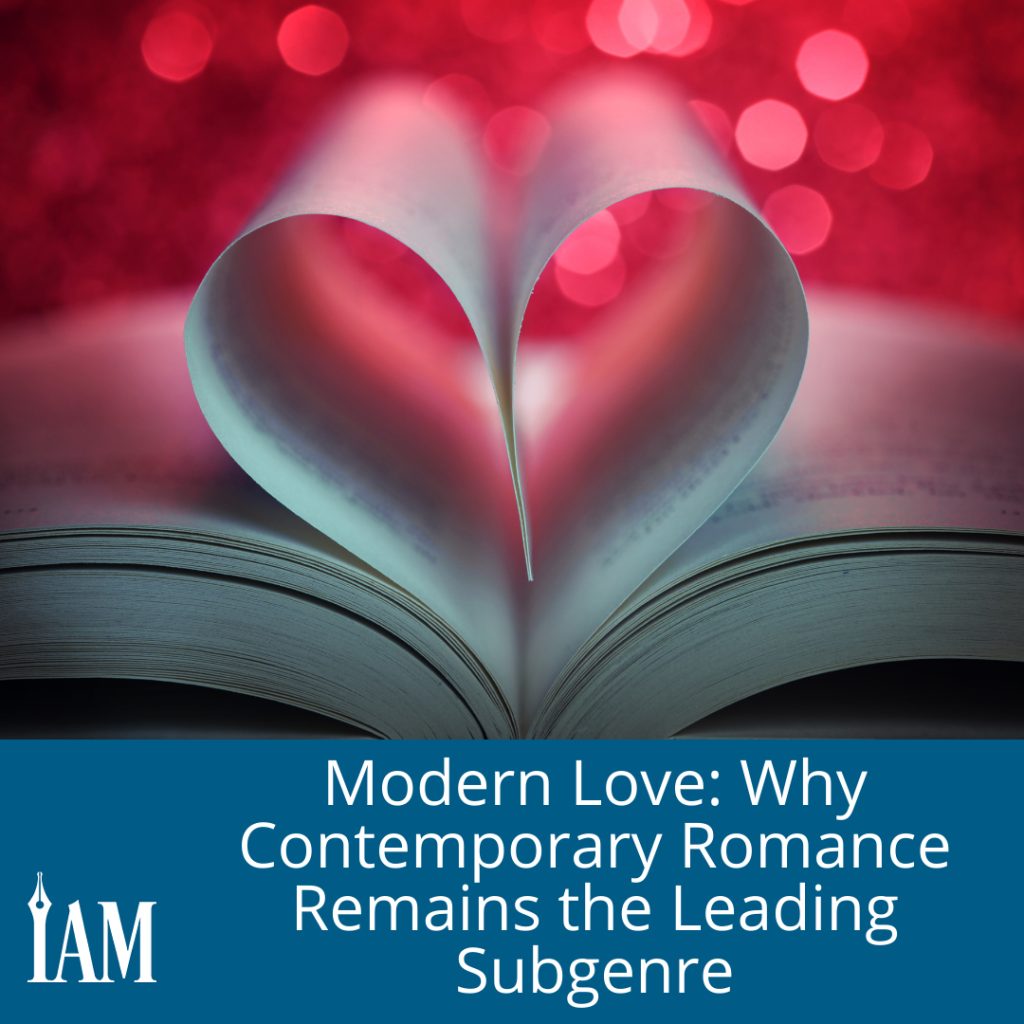Boy meets girl. Boy loses girl. Boy gets girl back.
This simple formula for writing a romance is timeless, but Contemporary Romance puts a modern spin on these stories that makes them relevant for today’s readers. Contemporary Romance reflects the issues, themes, problems, values, relationships, and lifestyle choices readers deal with in their own lives but guarantees one thing real life can’t: a happily ever after (HEA).
What is Contemporary Romance?
Romance Writers of America (RWA) characterizes the Romance genre as stories that have a “central love story and an emotionally satisfying ending.” The tone, setting, and heat level may vary, but the defining element of a Contemporary Romance is that it is set after 1950 and focuses primarily on the relationship.
“Romance has always been popular,” says Mark Leslie Lefebvre, director of business development at Draft2Digital and a published author with more than a quarter century of experience in the bookselling industry. “In general, Romance is, by far, ten times bigger than any other genre in ebook publishing because Romance readers are the most voracious readers you’ll ever find. They read faster. They read harder, and they read more consistently than any other readers.”
Contemporary Romance is the leading subgenre within this category, according to Reedsy, a community that connects authors and freelance professionals.
But what’s the appeal that keeps this Romance subgenre at the top of the list? Lorelei Buzzetta, a self-described “romance ambassador” and creative director of Lorelei’s Lit Lair, a virtual Romance reader and author community, says it is all about the HEA. “The endings are always filled with love and hope … It satisfies the readers’ expectations and fuels their love of reading.”
Contemporary Romance Then and Now
Romance, as a genre, has its roots in eighteenth- and nineteenth-century fiction penned by authors such as Ann Radcliffe and Jane Austen. Over the decades, Romance novels, the subgenres, and the readership have evolved, but according to Amanda Pagan, a children’s librarian with the New York Public Library, “historically, Romance novels separate themselves from other genres by being primarily written by women, for women, and about women.
That may have been true, even as recently as ten years ago, but male authors are moving in and making names for themselves in this female-dominated marketplace. Just ask Logan Chance, Mel Walker, and Rich Amooi, among others.
One hallmark of Contemporary Romance is that it reflects what’s happening now—or what was happening then, for books published in years’ past. Today’s contemporary romantic fiction deals head-on with issues such as grief and loss (Before I Let Go by Kennedy Ryan), neurodiversity (The Kiss Quotient by Helen Hoang), multicultural relationships (You Had Me at Hola by Alexis Daria), and LGBTQ+ relationships (Him by Sarina Bowen).
Lefebvre says pop culture has a huge influence on the stories Contemporary Romance authors tell. The popularity of Grey’s Anatomy led to an increase in medical romances. Ditto for Sons of Anarchy, which created demand for bad boy and motorcycle club romances, and Fifty Shades of Grey, which inspired the billionaire trend. Tuning into pop culture is one way authors can spot trends or hot topics to target themes, characters, and/or plots that may offer a strong hook to attract readers, such as royals and bachelors/insta-relationships, stemming from Harry and Meghan or today’s plethora of reality dating shows, respectively.
USA Today bestselling Contemporary Romance author Melanie Harlow, first published in 2013, has released more than thirty titles. She’s been on the forefront of changes to the genre but says there are some elements that remain consistent. “I think the structure of a romance—the bones of a good story—have remained unchanged. Those beats that readers expect—the meet-cute, the first kiss, the will-they-or-won’t-they, the fun and games, the dark moment, the grovel—are all still there. Tropes endure as well. Enemies to lovers, second chance, friends to lovers, billionaires, the jilted bride. … Those are evergreen and will always be popular.”
As for changes in today’s Contemporary Romance, Harlow shares these observations:
- a rise in popularity of dual first-person point of view
- authors choosing to distribute exclusively via Amazon’s Kindle Unlimited to leverage page read income versus wide distribution
- a shift from man-chest and couple covers to illustrated and discreet covers
- the impact of #BookTok and TikTok on book marketing thanks to viral posts and authors connecting with untapped readership
- an enhanced awareness of the value of tropes as marketing keywords but also in crafting a story that hits all the high notes for readers
Tips for Success in the Contemporary Romance Market
- Study the Market: Read the top sellers, data mine blurbs and ad copy, and track the tropes and trends.
- Keep the Contract with Readers: a HEA or HFN (happy for now) ending is non-negotiable.
- Find a Niche You Love and Own It: Consistency is key to building a solid readership.
- Market to Reader Expectations: Tropes not only help to craft a story that delivers on the promise to readers but can, and should, be part of marketing copy, such as book blurbs, to make buying decisions easier for readers who want a specific kind of book.
- Focus on All the Feels for a Rich, Emotionally Satisfying Read: Readers care about the characters and their journey to HEA.

